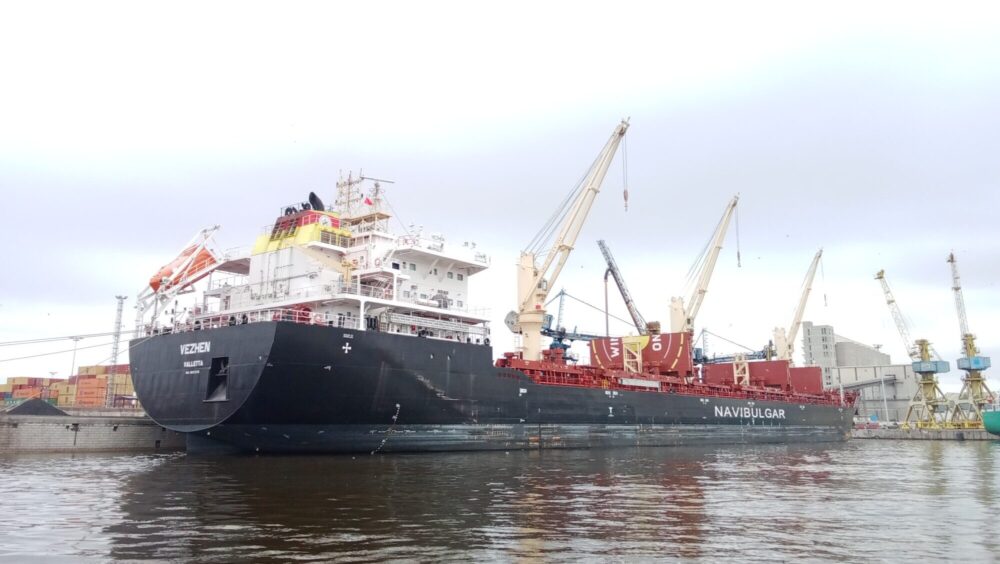
The Vezhen in port at Casablanca
Farid mernissi, CC BY 4.0, via Wikimedia Commons
Swedish prosecutors announced on Monday, February 3rd that they have ruled out sabotage in the investigation concerning a damaged fibre-optic cable in the Baltic Sea. They also stated that a Bulgarian vessel, which had been detained in connection with the incident, would be released, as it was determined that the damage was accidental.
The Malta-flagged vessel, Vezhen, was seized after damage to the fibre-optic cable linking Sweden and Latvia was discovered on January 26th.
Senior Prosecutor Mats Ljungqvist noted that “a combination of weather conditions and deficiencies in equipment and poor seamanship contributed to the cable break,” while confirming that the seized vessel was indeed responsible for the incident.
He stated that two of the three locking mechanisms designed to prevent the anchor from dropping had been out of commission for a lengthy period. The third was a manual lock. “We have film footage where we can see a wave hitting the lock and the anchor drops. In this case we can say ‘No, it wasn’t a hybrid attack’,” he added.
Alexander Kalchev, CEO of the ship’s operator Navigation Maritime Bulgare (Navibulgar), said “one of the ship’s anchors was damaged and the anchor had dropped into the sea, which means that it was possible that it had dragged along the seafloor.”
The damage occurred in Swedish territorial waters at a depth of at least 50 metres and involved a cable owned by Latvia’s state radio and television company.
At the time of the incident, the ship was transporting fertiliser from Ust-Luga in Russia to South America.
The damage to the cable was the most recent event in a series of suspected acts of sabotage in the region since Russia’s invasion of Ukraine three years ago. Since then, both Finland and Sweden have joined NATO in a bid to improve their security, at the same time angering Russia—which vowed to halt the expansion of the Western military alliance.
In December, the EstLink 2 undersea power cable between Finland and Estonia in the Baltic Sea was damaged, and NATO allies pointed the finger at the Eagle S oil tanker, which is suspected of being part of a ‘shadow fleet’ of ships that circumvent European Union sanctions imposed on Russian oil.
Last November, a Chinese ship was suspected of damaging two fibre-optic data cables connecting Nordic countries to mainland Europe, but some European officials suspected Russia of involvement, calling the incidents “acts of hybrid warfare.”
Moscow has denied any wrongdoing.
In September 2022, underwater explosions damaged the Nord Stream gas pipelines that run between Russia and Germany. In its investigative report, The Wall Street Journal implicated Ukrainian intelligence and military officials, as well as high-level Polish collaborators. Moscow accused Germany of failing to properly investigate the sabotage.
In October 2023, another gas pipeline, the Balticconnector, which links Finland and Estonia, was severed. Police suspected Chinese container vessel Newnew Polar Bear of damaging telecoms cables connecting Estonia to Finland and Sweden, before hitting the gas pipeline on its way to a port near St Petersburg in Russia.
NATO Secretary-General Mark Rutte announced a few weeks ago that the military alliance will be launching a new mission to protect undersea cables in the Baltic Sea region. He warned ships engaging in hostile activity that their actions will have consequences, “including possible boarding, impounding, and arrest.”
